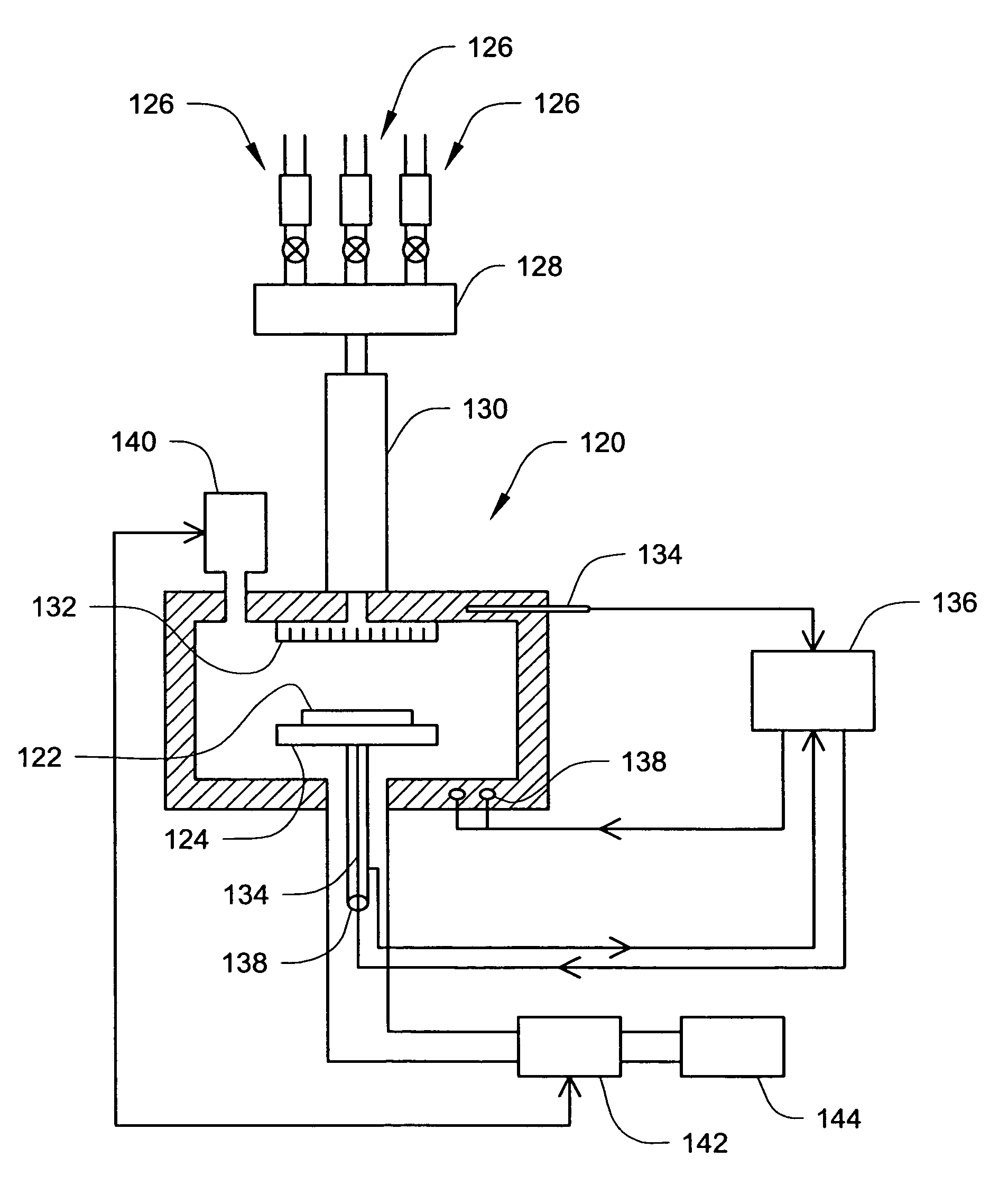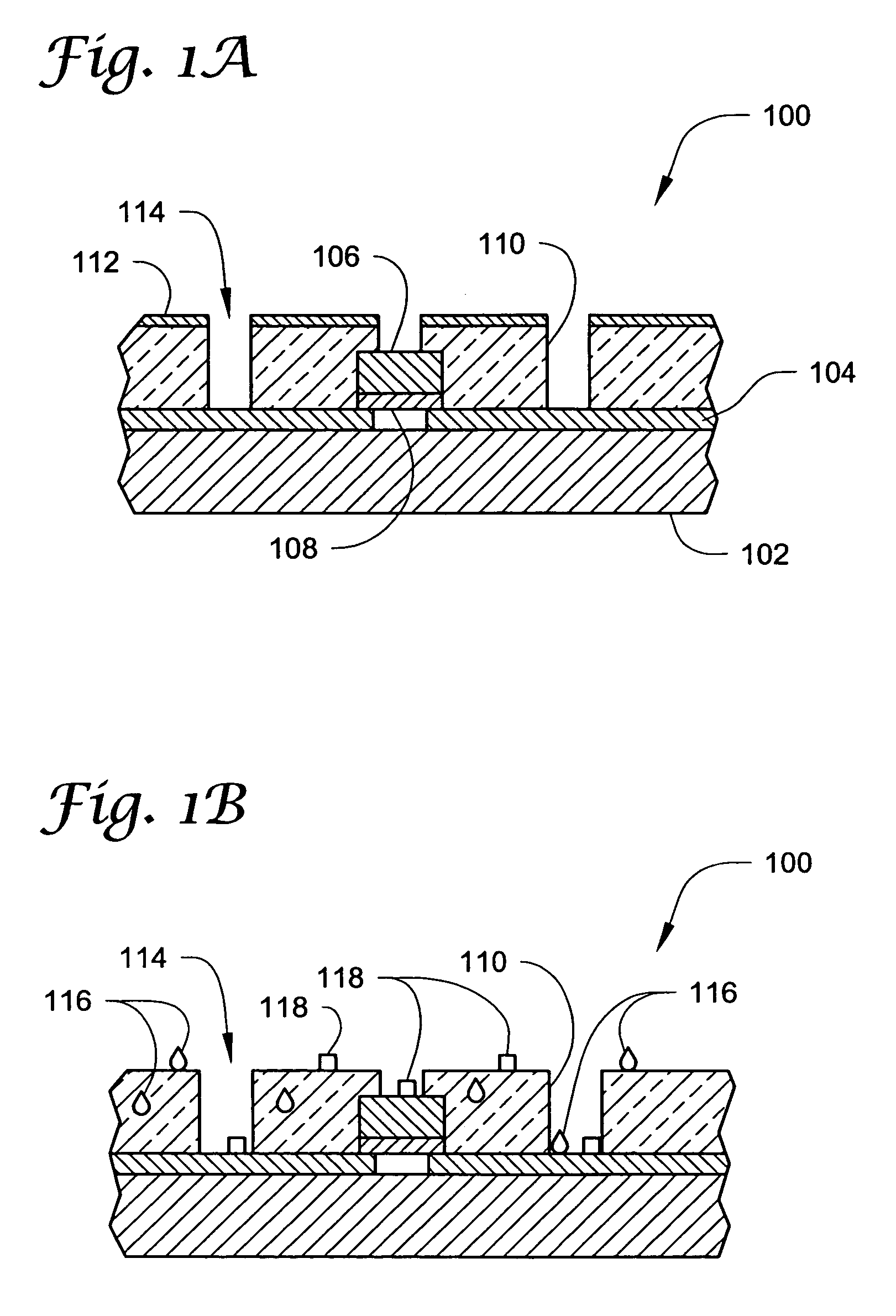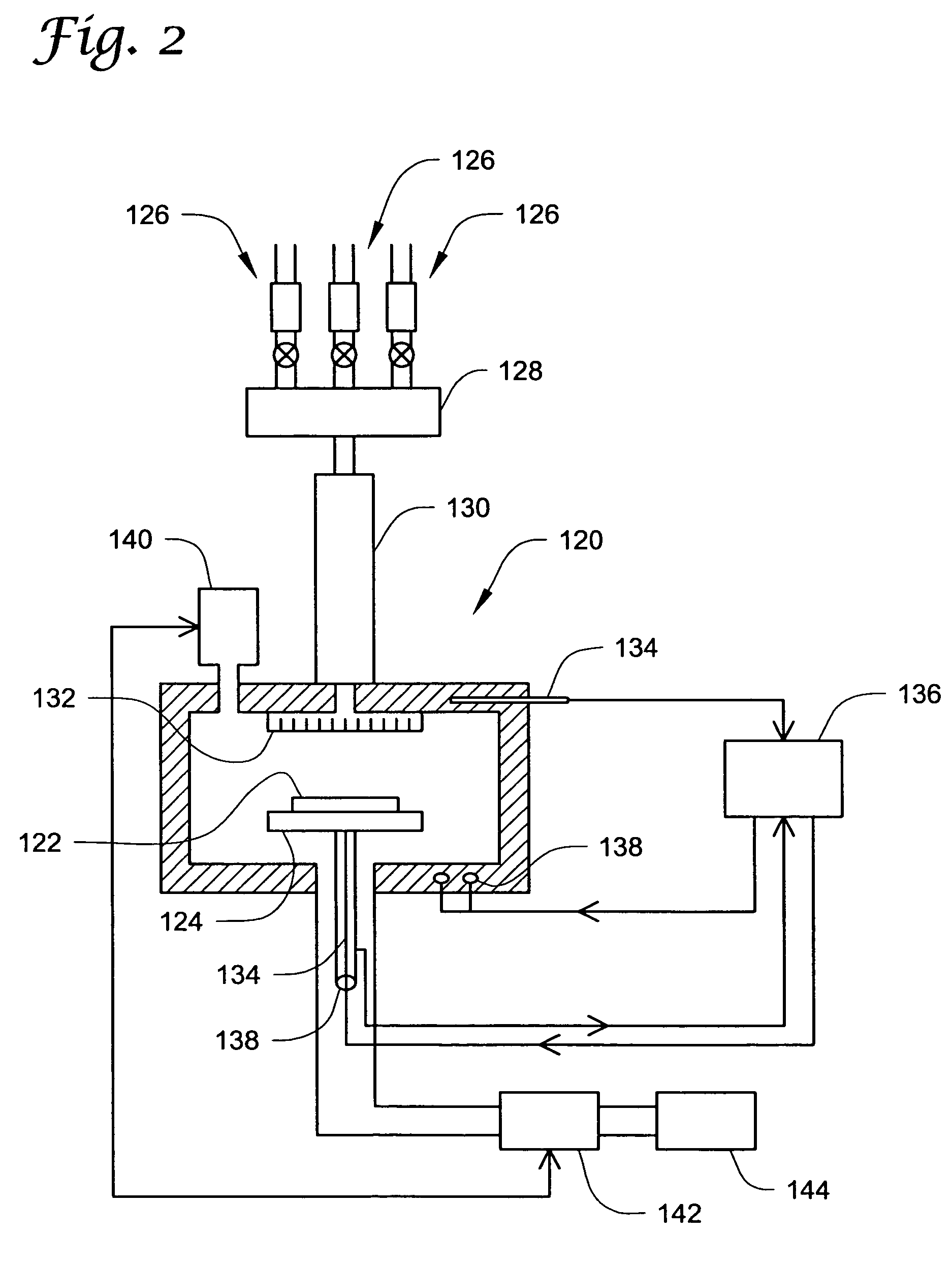Polar fluid removal from surfaces using supercritical fluids
a supercritical fluid and surface technology, applied in the direction of cleaning processes and apparatus, cleaning using liquids, cleaning processes, etc., can solve the problems of requiring months or more, circuits on silicon wafers requiring several hundred separate steps, and especially difficult removal
- Summary
- Abstract
- Description
- Claims
- Application Information
AI Technical Summary
Benefits of technology
Problems solved by technology
Method used
Image
Examples
example 1
[0061] This example illustrates a process for removing water from a clean, porous surface. An integrated circuit wafer including a foamed polyimide as an insulating material is placed in pressure vessel, such as that shown in FIG. 2. The integrated circuit is then immersed in ethyl alcohol. The temperature and pressure within the cleaning chamber is then raised to above 234° C. and 63 atmospheres, respectively, to provide ethyl alcohol that is in the supercritical state. After a time, the pressure is then rapidly decreased and the chamber is allowed to cool. Once the chamber has cooled sufficiently, the remaining ethyl alcohol is removed and the wafers are dried.
example 2
[0062] This example illustrates a process in which wet stripping of photoresist is followed by removal of water. An integrated circuit wafer including a photoresist layer is exposed to a 5:1H2SO4 / H2O2 solution (a “Piranha” solution) for 10 minutes at 125° C. in a CO2 atmosphere. The pressure of the CO2 is then raised to 73 atmospheres to provide a supercritical fluid. After a time, the pressure is rapidly decreased, and the wafer is then spun dry at 3,000 RPMs for 30 seconds. The wafer is then rinsed in de-ionized (18 Meg Ohm) water. Water present on the water is then removed using the water removal process described in Example 1.
example 3
[0063] This example illustrates a process in which dry stripping of photoresist is followed by removal of water. An integrated circuit wafer including a photoresist layer is exposed to a plasma strip process at 2500 W for 10 seconds, using a 5% O2, 95% N2 gas mixture. The integrated circuit wafer is then rinsed with de-ionized water (18 Meg ohm) in a CO2 atmosphere at room temperature (18-23° C.). The wafer is retained in a CO2 atmosphere, which is converted to a supercritical state by increasing the temperature to 32° C. and the pressure to 73 atm., from 30 minutes to three hours, depending upon the materials used. After a time, the pressure is rapidly decreased and the wafer is dried by spin drying at 3,000 RPMs for 30 seconds. The wafer is then rinsed again in de-ionized (18 Meg Ohm) water. Water is then removed from the wafer using the water removal process described in Example 1.
PUM
| Property | Measurement | Unit |
|---|---|---|
| Size | aaaaa | aaaaa |
| Temperature | aaaaa | aaaaa |
| Temperature | aaaaa | aaaaa |
Abstract
Description
Claims
Application Information
 Login to View More
Login to View More - R&D
- Intellectual Property
- Life Sciences
- Materials
- Tech Scout
- Unparalleled Data Quality
- Higher Quality Content
- 60% Fewer Hallucinations
Browse by: Latest US Patents, China's latest patents, Technical Efficacy Thesaurus, Application Domain, Technology Topic, Popular Technical Reports.
© 2025 PatSnap. All rights reserved.Legal|Privacy policy|Modern Slavery Act Transparency Statement|Sitemap|About US| Contact US: help@patsnap.com



